Exhaust Aftertreatment System (ATS)
Vehicles and/or engines manufactured after December 31, 2006 and domiciled in the U.S. or Canada are required to meet all EPA and NHTSA regulations effective as of the vehicle build date. Engines manufactured between January 1, 2007 and December 31, 2009 meet EPA07 requirements. Engines manufactured between January 1, 2010 and December 31, 2012 meet EPA10 requirements.
Model year 2013 and later vehicles meet additional requirements as specified by NHTSA and EPA 2014 fuel efficiency and greenhouse gas emission standards (GHG14). Model year 2017 and later vehicles meet similar requirements as specified by GHG17 requirements. These vehicles are equipped with components that increase fuel efficiency and reduce GHG emissions.
IMPORTANT: Depending on local jurisdictional guidelines, vehicles that are domiciled outside of the U.S. and Canada may not have emissions aftertreatment systems (ATS) that are compliant with EPA regulations.
NOTICE
NOTICE
IMPORTANT: Using non-specification fuels or oils can lead to shortened diesel particulate filter (DPF) cleaning or replacement intervals. For example, using CK-4+ oil with 1.3% sulfated ash (30% more ash content) may result in the need for DPF cleaning or replacement 20 to 30% sooner than would normally be required.
IMPORTANT: See the engine manufacturer's operation manual for complete details and operation of the ATS.
EPA07 Engines
Engines built between January 1, 2007 and December 31, 2009 are required to meet EPA07 guidelines for reduced exhaust emissions of particulate matter and nitrogen oxides (NOx). NOx is limited to just over 1 gram per brake horsepower hour (g/bhp-hr), and particulate matter cannot exceed 0.01 g/bhp-hr.
The EPA07 ATS varies according to engine manufacturer and vehicle configuration, but the exhaust muffler is replaced by an aftertreatment device (ATD). Inside the ATD, the exhaust first passes over the diesel oxidation catalyst (DOC), then passes through the diesel particulate filter (DPF), which traps soot particles. The soot is burned to ash during a process called regeneration (regen).
EPA10 and Newer Engines
The EPA mandates that all engines built after December 31, 2009 must reduce the level of emissions exhausted by the engine to the following levels:
Nitrogen Oxides (NOx) – 0.2 g/bhp-hr
Particulate Matter (PM) – .01 g/bhp-hr
To meet EPA guidelines, engines that are compliant with EPA10 and newer regulations use an ATS that has, in addition to a DOC/DPF device like that used in an EPA07 ATD, a Selective Catalytic Reduction (SCR) device to reduce NOx downstream of the engine.
After exhaust gases leave the engine, they flow into the ATS. First they flow into a two-part ATD, comprised of a diesel oxidation catalyst (DOC), and a diesel particulate filter (DPF). The DPF traps soot particles, then exhaust heat converts the soot to ash in the DPF, in a process called regeneration (regen). The harder an engine works, the better it disposes of soot. Passive regen occurs when the engine is running under load and regen occurs without input. If the engine isn't running hot enough, the electronic controls may initiate an active regen, whereby extra fuel is injected into the exhaust stream before the diesel particulate filter, to superheat the soot trapped in the filter and reduce it to ash. Both types of regen occur without driver input.
WARNING
Operating at reduced engine load will allow soot to accumulate in the DPF. When this occurs, the DPF lamp illuminates, indicating that a regen must be performed, and the driver must either bring the vehicle up to highway speed to increase the load, or park the vehicle and initiate a parked regen. See Parked Regen , later in this chapter for instructions.
After the exhaust stream passes through the ATD, it flows through another canister housing the SCR device. A controlled quantity of diesel exhaust fluid (DEF) is injected into the exhaust stream, where heat converts it to ammonia (NH3) gas. This mixture flows through the SCR device, where the ammonia gas reacts with the NOx in the exhaust, to produce harmless nitrogen (N2) and water vapor (H2O), which then exits out of the tailpipe.
ATS Warning Lamps
Warning lamps in the driver's message center alert the driver of situations with the ATS.
An illuminated DPF lamp indicates a regen is needed. See Fig. 7.2 .
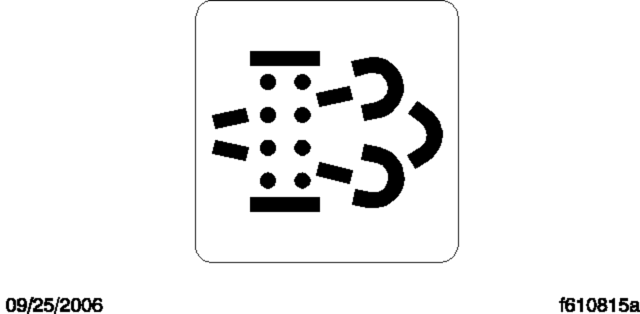
Fig. 7.2, Diesel Particulate Filter (DPF) Lamp
A slow, 10-second flashing of the high exhaust system temperature (HEST) lamp alerts the driver that a parked regen is in progress, but the exhaust temperatures are still relatively cool. It also indicates that the high-idle speed is being controlled by the engine software, not the driver. See Fig. 7.3 .
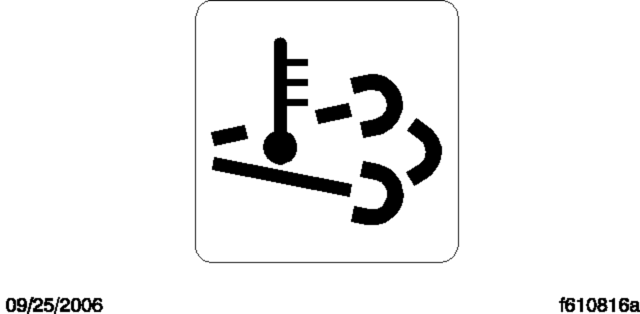
Fig. 7.3, High Exhaust System Temperature (HEST) Lamp
A steadily illuminated HEST lamp alerts the operator of high exhaust temperatures when vehicle speed is below 5 mph (8 km/h) while it is performing an automatic regen, and during a parked regen.
An illuminated DEF warning lamp in the gauge, indicates that the DEF tank should be refilled at the next opportunity.
Parked Regen
DANGER
A reference label is included with the driver's documentation package initially in the glove box, that explains the ATS warnings, and actions required to avoid further engine protection sequences. See Fig. 7.4 .
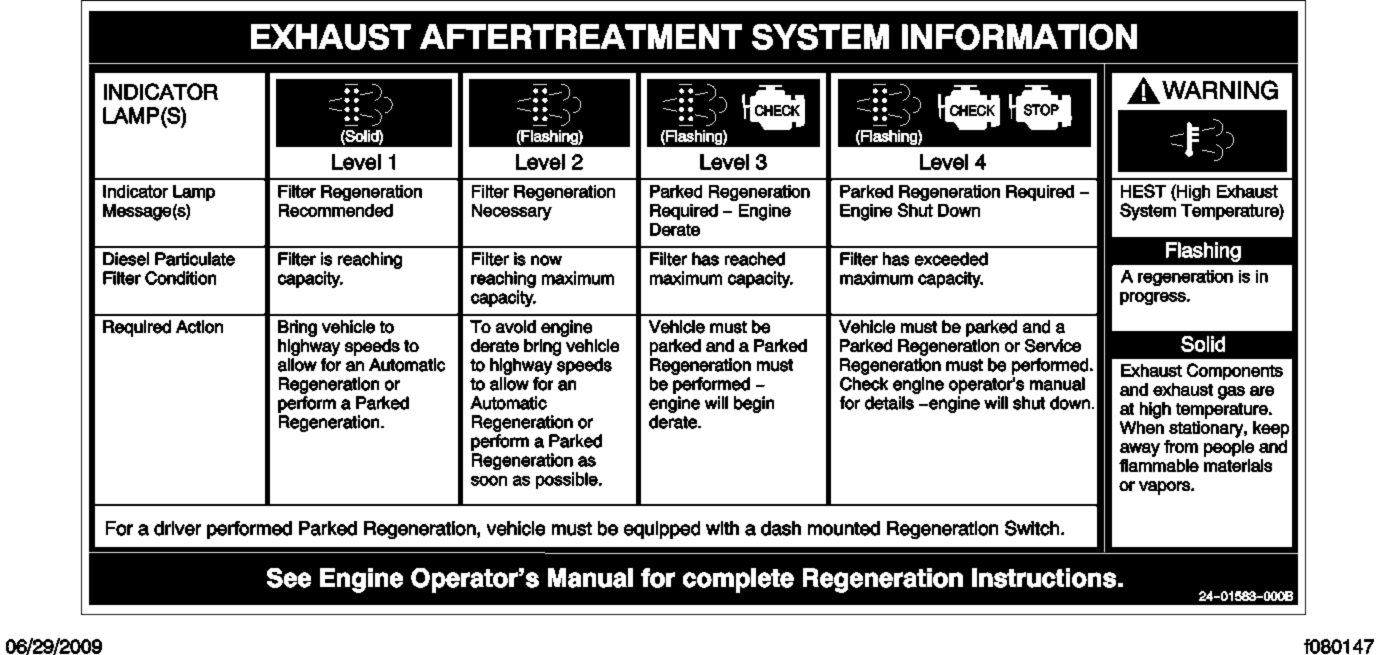
Fig. 7.4, Exhaust-Aftertreatment Warnings Reference Label
IMPORTANT: The vehicle can have two different ways to initiate a parked regen, depending on the body builder. If there is not a regen switch on the dash, go to the Shorting Plug section.
The regen switch, located on the dash, is used to initiate a parked regen of the aftertreatment device. See Fig. 7.5.
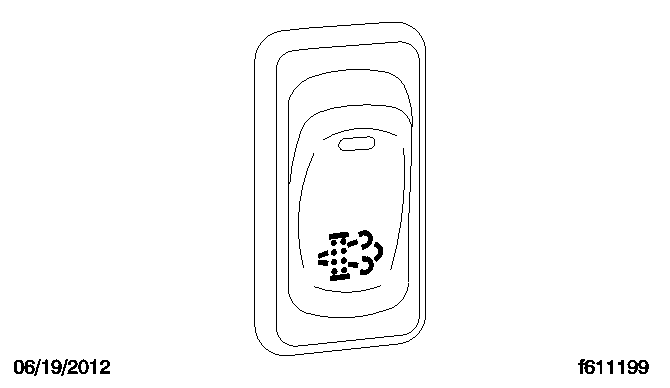
Fig. 7.5, Regen Switch
NOTE: The DPF lamp must be illuminated before the regen switch will initiate a parked regen.
To initiate a parked regeneration, perform the following steps.
1.
Park the vehicle away from all combustible and flammable materials. Chock the tires. Start and warm the engine until the coolant temperature is at least 150°F (66°C).
2.
Set the parking brake. If the parking brake was already set, it must be released, then set again.
2.
For manual transmissions, fully depress the clutch pedal, put the transmission in neutral, then release the pedal.
2.
If the vehicle has a two-pedal automated transmission, shift it into gear, then back to neutral.
IMPORTANT: The driver must remain with the vehicle during the entire regen cycle.
3.
Press and hold the regen switch for 4 seconds. The engine will increase rpm and initiate the regen process.
4.
The regen cycle will finish after 20 to 60 minutes, at which time engine idle speed will drop to normal and the vehicle can be driven normally. The HEST lamp may be illuminated, but will go out when the vehicle speed exceeds 5 mph (8 km/h), or the system has cooled to normal operating temperature.
5.
To stop a parked regen at any time during the process, engage the clutch, brake, or accelerator pedal, or turn off the engine.
Shorting Plug
NOTE: The DPF lamp must be illuminated before the shorting plug will initiate a parked regen.
The shorting plug is used to initiate a parked regen of the ATD. The shorting plug is located under the dash, next to the steering column. Mounting locations vary. See Fig. 7.6.
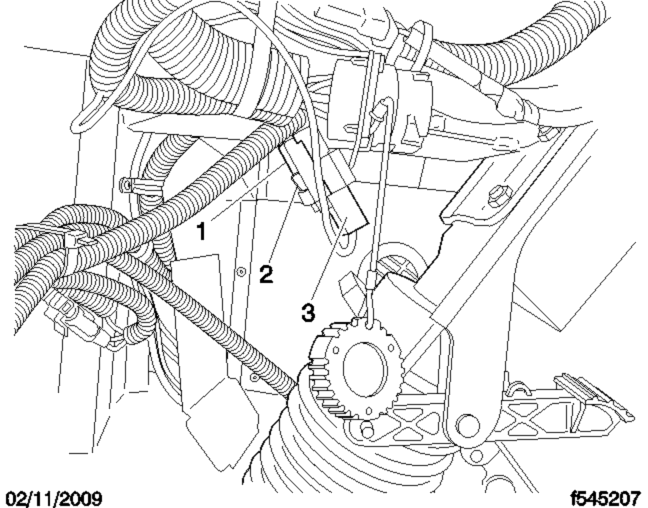
- 1. Primary Lock
- 2. Secondary "Red" Lock
- 3. Plug
Fig. 7.6, Shorting Plug
To initiate a parked regeneration, perform the following steps.
1.
Park the vehicle away from all combustible and flammable materials. Chock the tires. Start and warm the engine until the coolant temperature is at least 150°F (66°C).
2.
Set the parking brake. If the parking brake was already set, it must be released, then set again.
2.
For manual transmissions, fully depress the clutch pedal, put the transmission in neutral, then release the pedal.
2.
If the vehicle has a two-pedal automated transmission, shift it into gear, then back to neutral.
IMPORTANT: The driver must remain with the vehicle during the entire regen cycle.
3.
Disconnect the shorting plug, as follows.
4.
Wait four seconds.
5.
Connect the shorting plug.
6.
Engine rpm will rise, and initiate the regen process.
7.
The regen cycle will finish after 20 to 60 minutes, at which time engine idle speed will drop to normal and the vehicle can be driven normally. The HEST lamp may be illuminated, but will go out when the vehicle speed exceeds 5 mph (8 km/h), or the system has cooled to normal operating temperature. The DPF light will shut off.
8.
To stop a parked regen at any time during the process, engage the clutch, service brake, or accelerator pedal, or turn off the engine.
DPF Maintenance
Eventually ash will accumulate in the DPF and the filter will require servicing. DPF servicing must be performed by an authorized technician, following the engine manufacturer's instructions. A record must be maintained for warranty purposes, that includes:
date of cleaning or replacement;
vehicle mileage;
particulate filter part number and serial number.
Diesel Exhaust Fluid and Tank, EPA10 and Newer Engines
Diesel Exhaust Fluid
Diesel exhaust fluid (DEF) is used in the ATS to lower NOx in the exhaust stream. DEF is colorless and close to odorless (it may have a slightly pungent odor similar to ammonia). It is nontoxic, nonflammable, and biodegradable. It is mildly corrosive to aluminum, but does not affect the strength or structure of the aluminum.
White crystals may be noticeable around components that come into contact with DEF. The crystals are easily removed with water.
DEF consumption varies depending on ambient conditions and vehicle application.
Freezing Conditions
DEF freezes to slush at around 12°F (-11°C). It is not damaged or destroyed if frozen, and is fully usable when thawed. The DEF in the tank is allowed to freeze while a vehicle is non-operational. At start-up, normal operation of the vehicle is not inhibited if the DEF is frozen; an immersion heater with engine coolant flowing through it warms the DEF once the engine is running, allowing the SCR system to operate.
Pre-2013 DEF supply lines are electrically-heated and are purged when the engine is shut down; complete purging of the DEF lines requires approximately five minutes after the engine is shut down.
DEF supply lines with engine model year 2013 and newer are designed to survive freezing conditions while containing DEF, so purging is not required.
DEF Tank
Engines that are compliant with EPA10 and newer regulations are equipped with a DEF tank located forward of the ATS. See Fig. 7.7 . The DEF tank has a 19 mm filler neck inlet that prevents the hose from a diesel outlet from being inserted, and has a blue cap for easy identification.

- 1. ATS
- 2. DEF Tank
- 3. DEF Gauge (optional)
Fig. 7.7, DEF Tank With Optional DEF Gauge
The DEF tank will require filling a minimum of approximately every second diesel refuel depending on the DEF tank capacity. 10-, 13-, and 15-gallon tank capacities are available. DEF consumption is approximately 2% of fuel consumption, dependent on vehicle operation. For every 50 gallons of diesel fuel consumed, approximately 1 gallon of DEF will be consumed.
Some vehicles are equipped with a remote DEF fill-port. If so equipped, the remote port is directly opposite the DEF tank on the other side of the vehicle, and has a blue cap over the fill-port. See Fig. 7.8 .
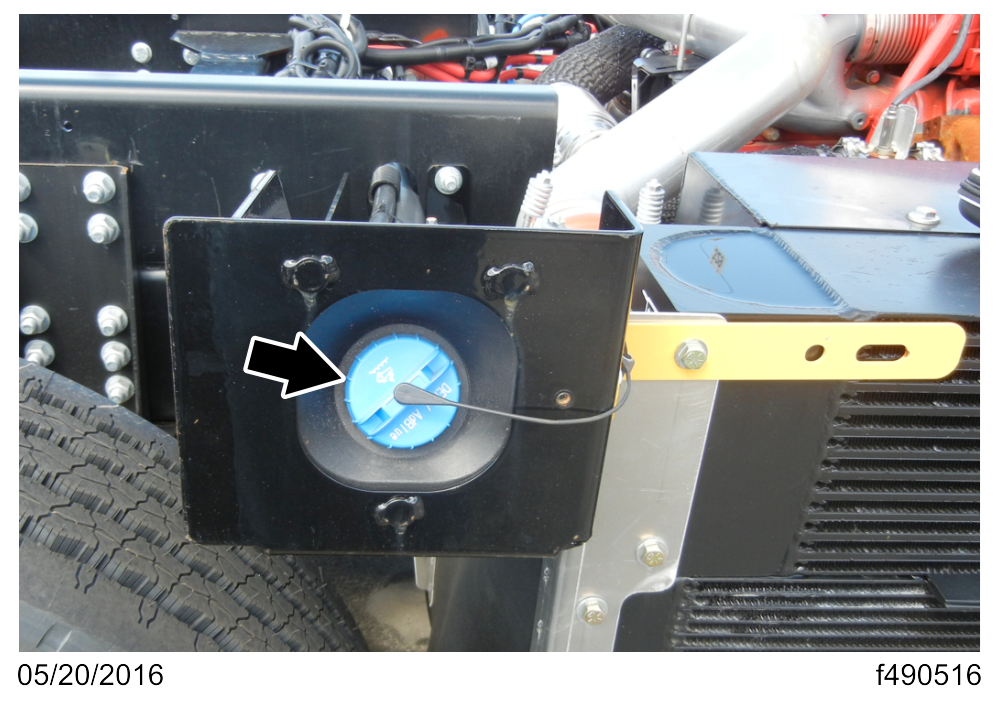
Fig. 7.8, Remote DEF Fill-Port
Fuel/DEF Gauge
The fuel and DEF levels are measured in a multipurpose fuel/DEF/voltmeter gauge. See Fig. 7.9 .
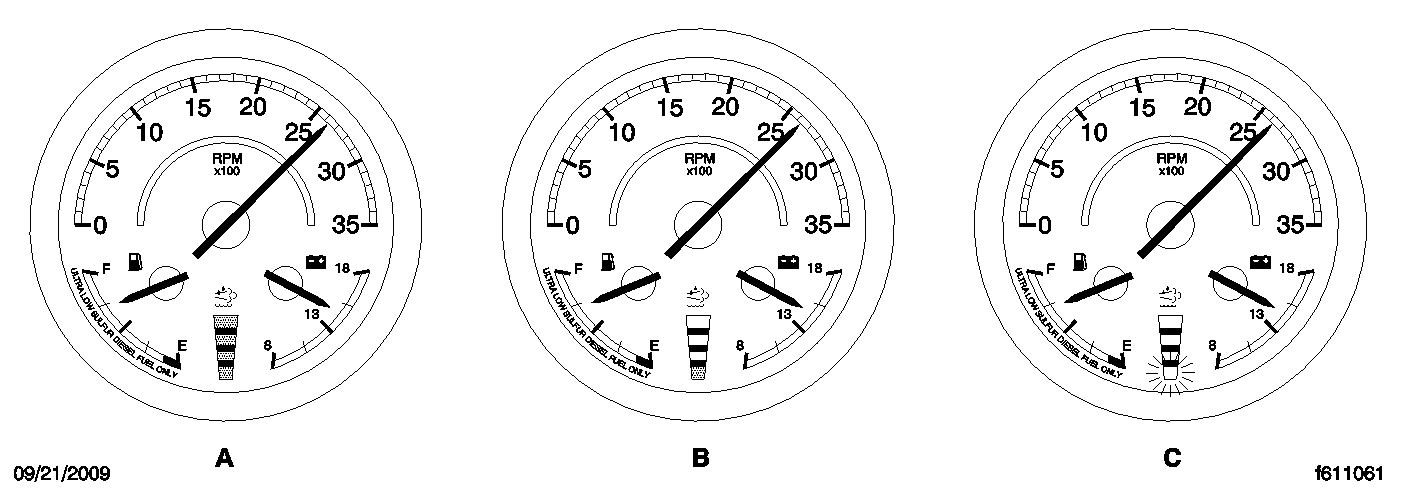
- A. 1 to 4 lamps steady green in DEF lightbar, DEF level indicators.
- B. 1 lamp steady amber in DEF lightbar, DEF low, refill DEF.
- C. 1 lamp flashing red in DEF lightbar, DEF empty, refill DEF.
Fig. 7.9, Fuel/DEF/Voltmeter Gauge
Fuel level is indicated at the top of the gauge. Below the fuel level, a low fuel warning lamp illuminates amber when the fuel level drops below 1/8th of the capacity.
The DEF lightbar indicates the level in the DEF tank as follows.
Four bars illuminated green—Between 75% and 100% full
Three bars illuminated green—Between 50% and 75% full
Two bars illuminated green—Between 25% and 50% full
One bar illuminated green—Between approximately 10% and 25% full
One bar illuminated amber—DEF low, refill DEF
One bar flashing red—DEF empty, refill DEF
LBCU DEF Warnings and Engine Limits
IMPORTANT: Ignoring the DEF warning lights and not refilling the DEF tank will result in limited engine power with a speed limit of 5 mph (8 km/h) eventually being applied. See the engine manufacturer's operation and maintenance manual for further information.
DEF Level—Initial Warning
When the DEF level becomes low, the following warning strongly encourages the driver to refill the DEF tank.
The CHECK engine lamp flashes for 30 seconds when the vehicle is started.
The DEF warning lamp illuminates.
The DEF tank must be filled to cancel the warning sequence.
DEF Low
When the DEF level reads low, the following warnings are activated. See Fig. 7.10 .
The CHECK engine lamp flashes for 30 seconds when the vehicle is started.
The DEF warning lamp illuminates.
A LOW DEF message appears on the LBCU driver display screen.
One bar of the DEF-level lightbar illuminates amber.
A brief audible alert notifies the driver.
Engine performance is limited, with progressively harsher engine power limits applied.
The DEF tank must be filled to cancel the warning sequence.

NOTE: Engine power is limited.
- A. DEF-Level Lightbar (1 bar solid amber)
Fig. 7.10, DEF Level Low Warning
DEF Empty
When the DEF tank registers empty, the following warnings are activated. See Fig. 7.11 .
The DEF warning lamp flashes.
A VERY LOW DEF message appears on the LBCU driver display screen.
One bar of the DEF-level lightbar flashes red.
The CHECK engine lamp illuminates.
Engine performance is limited, with progressively harsher engine power limits applied.
The DEF tank must be filled to cancel the warning sequence.
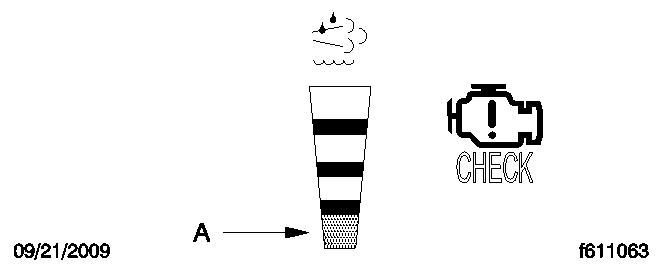
NOTE: Engine power is limited.
- A. DEF-Level Lightbar (1 bar flashing red)
Fig. 7.11, DEF Level Empty Warning
DEF Level Empty and Ignored
If the empty warning is ignored and the DEF is not refilled, the DEF warning lamp flashes, one bar of the DEF-level lightbar flashes red, and the red STOP engine lamp illuminates in addition to the CHECK engine warning lamp. A 5 mph (8 km/h) speed limit is applied after the next engine shutdown or while parked and idling. See Fig. 7.12 .
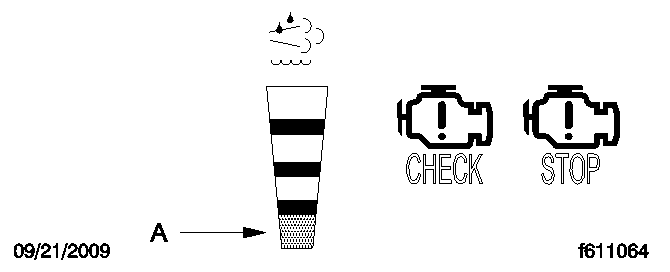
NOTE: The STOP engine and CHECK engine lamps illuminate, engine power is limited, speed limit of 5 mph (8 km/h).
- A. DEF-Level Lightbar (1 bar flashing red)
Fig. 7.12, DEF Empty and Ignored Warning
DEF Quality or SCR Tampering
NOTICE
If contaminated DEF or tampering is detected, the SCR system activates a POOR DEF QUALITY message on the LBCU driver display screen and engine performance is limited with progressively harsher engine power limits applied. If the fault is not corrected, the CHECK engine lamp illuminates, then the STOP engine lamp illuminates and a 5 mph (8 km/h) speed limit is applied after the next engine shutdown, or while parked and idling. See Fig. 7.12 .
Ametek DEF Warnings and Engine Limits
IMPORTANT: Ignoring the DEF warning lights and not refilling the DEF tank will result in limited engine power with a speed limit of 5 mph (8 km/h) eventually being applied. See the engine manufacturer's operation and maintenance manual for further information.
DEF Level Low—Initial and Critical Warnings
When the DEF level reads low the following warnings strongly encourage the driver to refill the DEF tank. See Fig. 7.13 .
The CHECK engine lamp flashes for 30 seconds when the vehicle is started.
The DEF warning lamp illuminates.
One bar of the DEF-level lightbar illuminates solid amber.
Engine performance is limited, with progressively harsher engine power limits applied.
The DEF tank must be filled to cancel the warning sequence.
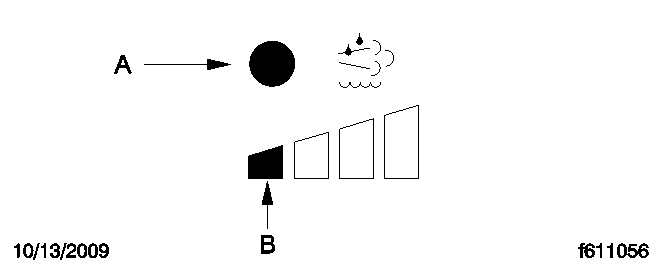
- A. DEF Warning Lamp (illuminates constantly)
- B. DEF-Level Lightbar (1 bar solid amber)
Fig. 7.13, DEF Level Low Initial and Critical Warnings
DEF Empty
When the DEF level reads empty, the following warnings are activated. See Fig. 7.14 .
The DEF warning lamp flashes.
The CHECK engine lamp illuminates.
One bar of the DEF-level lightbar flashes red.
A brief audible alert notifies the driver.
Engine performance is limited, with progressively harsher engine power limits applied.
The DEF tank must be filled to cancel the warning sequence.

NOTE: Engine performance is limited.
- A. DEF Warning Lamp (flashing)
- B. DEF-Level Lightbar (1 bar flashing red)
Fig. 7.14, DEF Empty Warning
DEF Level Empty and Ignored
If the empty warning is ignored and the DEF is not refilled, the DEF warning lamp flashes, one bar of the DEF-level lightbar flashes red, and the red STOP engine lamp illuminates in addition to the CHECK engine warning lamp. A brief audible alert notifies the driver. See Fig. 7.15 .
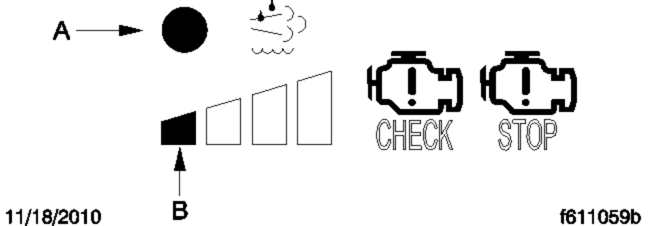
NOTE: The STOP engine, CHECK engine, and DEF lamps illuminate, engine power is limited, speed limit of 5 mph (8 km/h).
- A. DEF Warning Lamp (flashing)
- B. DEF-Level Lightbar (1 bar flashing red)
Fig. 7.15, DEF Empty and Ignored Warning
If the DEF tank is not refilled, a 5 mph (8 km/h) speed limit will be applied after the next engine shutdown, or while parked and idling.
DEF Quality or SCR Tampering
NOTICE
If contaminated DEF or tampering is detected, the DEF warning light flashes, and engine performance is limited with progressively harsher engine power limits applied. If the fault is not corrected, the CHECK engine lamp illuminates, then the STOP engine lamp illuminates and a 5 mph (8 km/h) speed limit will be applied after the next engine shutdown, or while parked and idling. See Fig. 7.15 .
OptiView™ DEF Warnings and Engine Limits
NOTE: The OptiView instrument panel has a DEF gauge that contains a low DEF warning lamp, which activates when the DEF tank needs to be refilled. Along with the DEF warning lamp activation, warning statements appear in the center of the OptiView panel.
DEF Level—Initial Warning
When the DEF level becomes low, the following warning strongly encourages the driver to refill the DEF tank.
The CHECK engine lamp flashes for 30 seconds when the vehicle is started.
The DEF warning lamp illuminates.
The DEF tank must be filled to cancel the warning sequence.
DEF Low
When the DEF level reads low, the following warnings are activated.
The CHECK engine lamp flashes for 30 seconds when the vehicle is started.
The DEF warning lamp illuminates.
A LOW DEF message appears in the center of the instrument panel.
One bar of the DEF-level lightbar illuminates amber.
A brief audible alert notifies the driver.
Engine performance is limited, with progressively harsher engine power limits applied.
The DEF tank must be filled to cancel the warning sequence.
DEF Empty
When the DEF tank registers empty, the following warnings are activated.
The DEF warning lamp flashes.
A VERY LOW DEF message appears in the center of the instrument panel.
One bar of the DEF-level lightbar flashes red.
The CHECK engine lamp illuminates.
Engine performance is limited, with progressively harsher engine power limits applied.
The DEF tank must be filled to cancel the warning sequence.
DEF Level Empty and Ignored
If the empty warning is ignored and the DEF is not refilled, the DEF warning lamp flashes, one bar of the DEF-level lightbar flashes red, and the red STOP engine lamp illuminates in addition to the CHECK engine warning lamp. A 5 mph (8 km/h) speed limit is applied after the next engine shutdown or while parked and idling.
DEF Quality or SCR Tampering
NOTICE
If contaminated DEF or tampering is detected, the DEF warning light flashes, and engine performance is limited with progressively harsher engine power limits applied. If the fault is not corrected, the CHECK engine lamp illuminates, then the STOP engine lamp illuminates and a 5 mph (8 km/h) speed limit will be applied after the next engine shutdown, or while parked and idling.